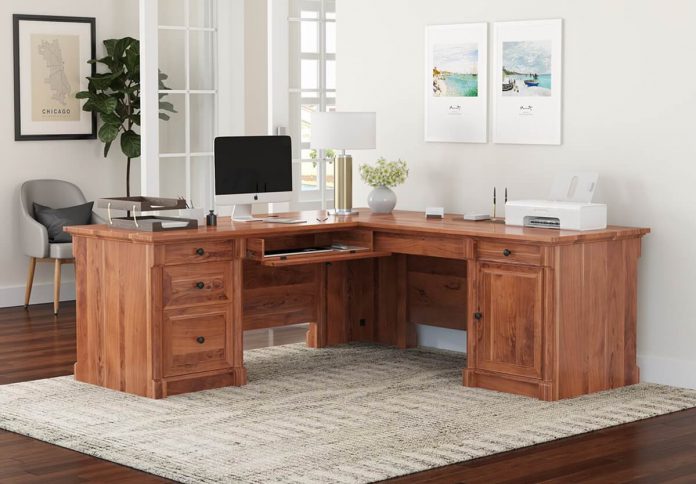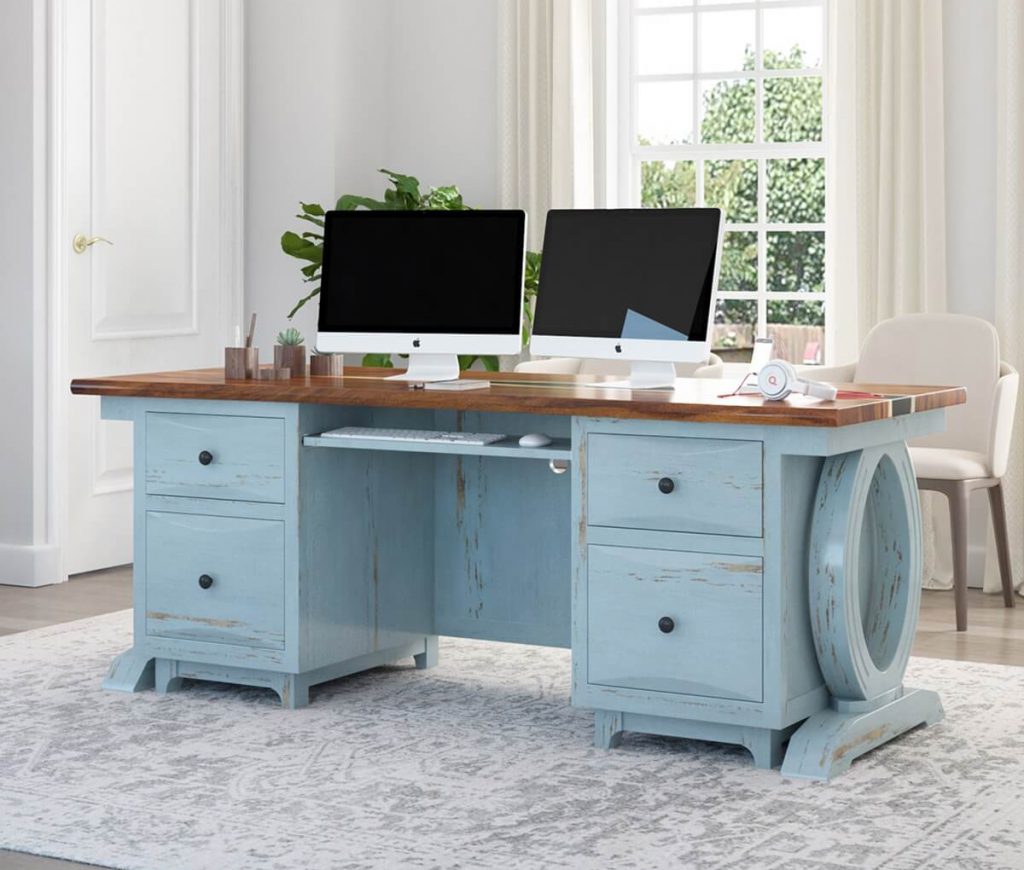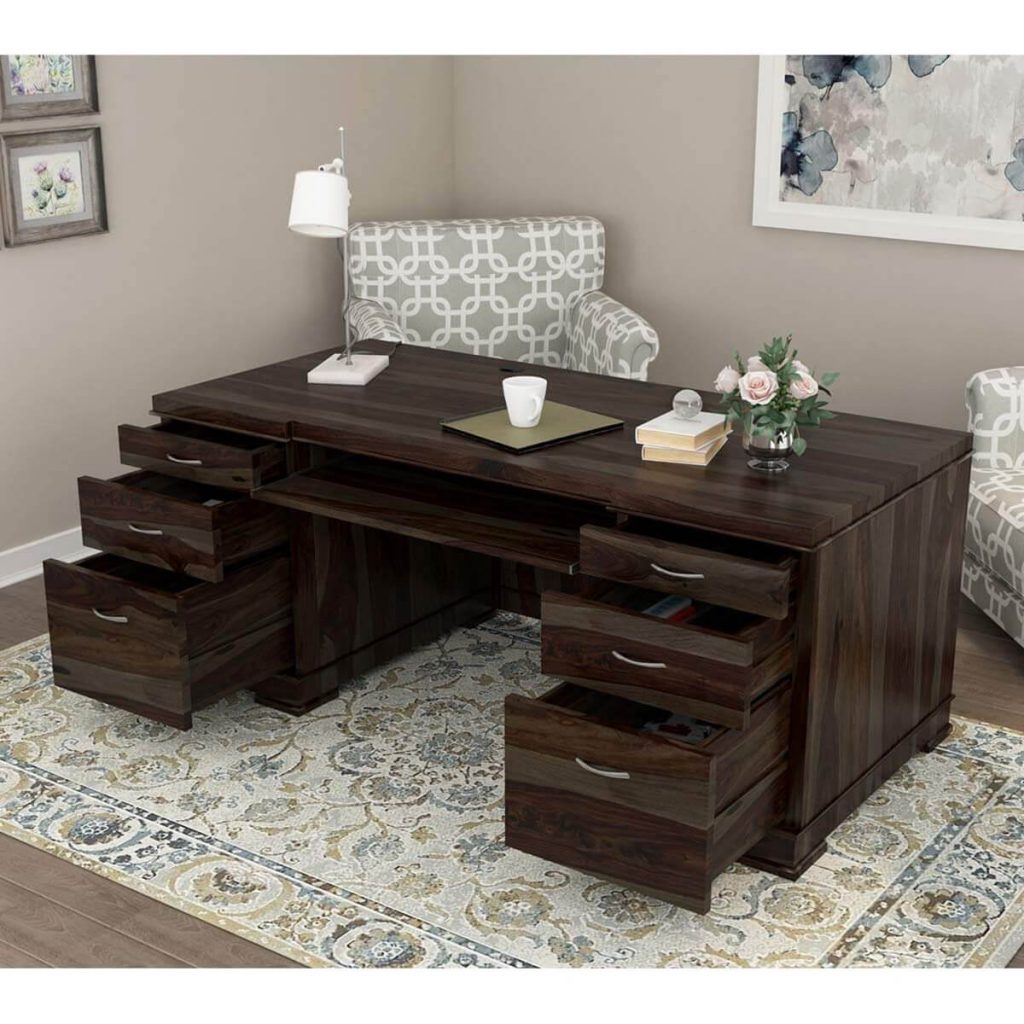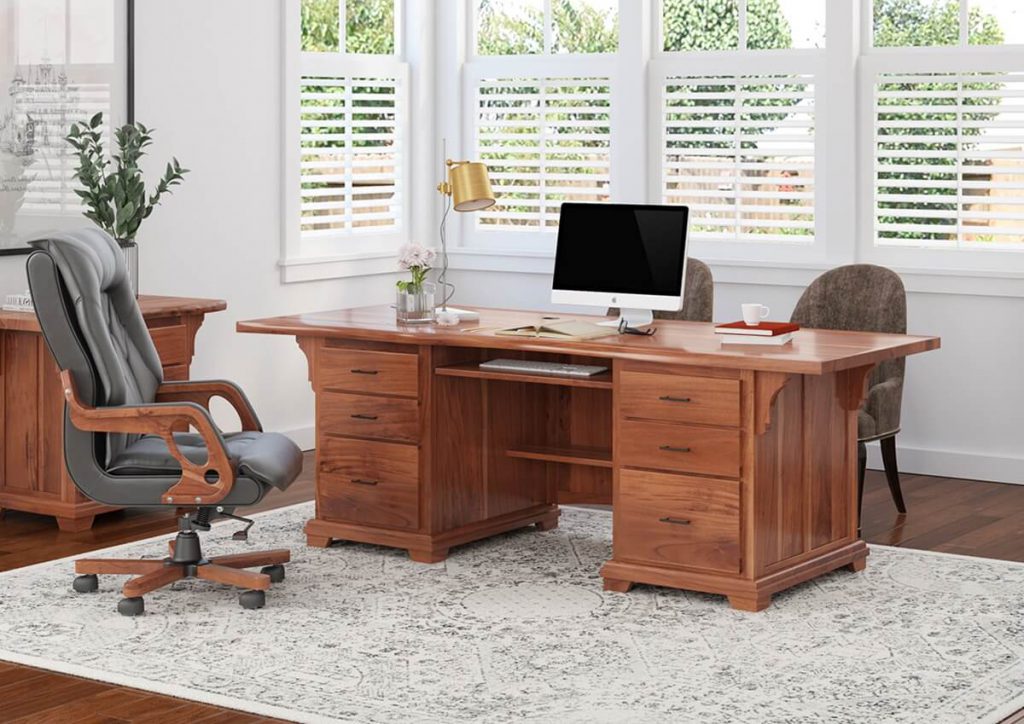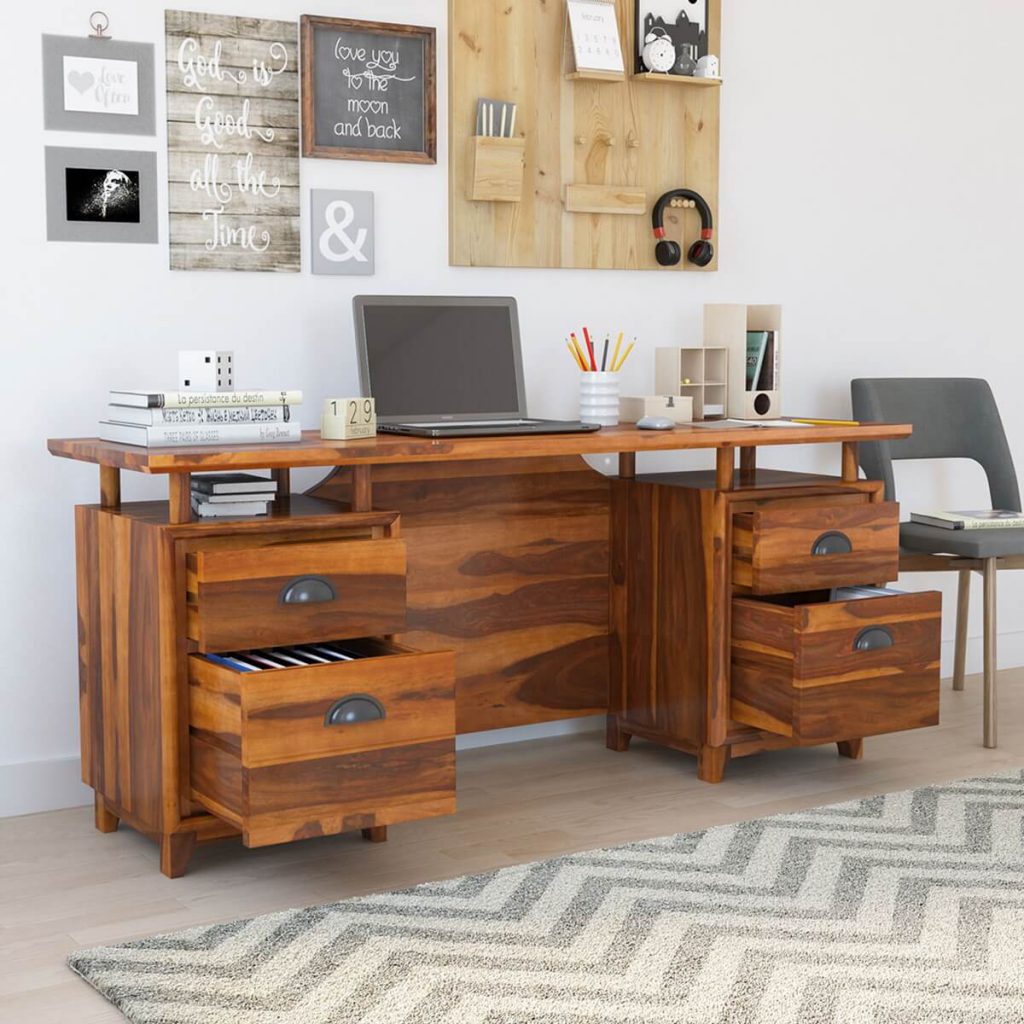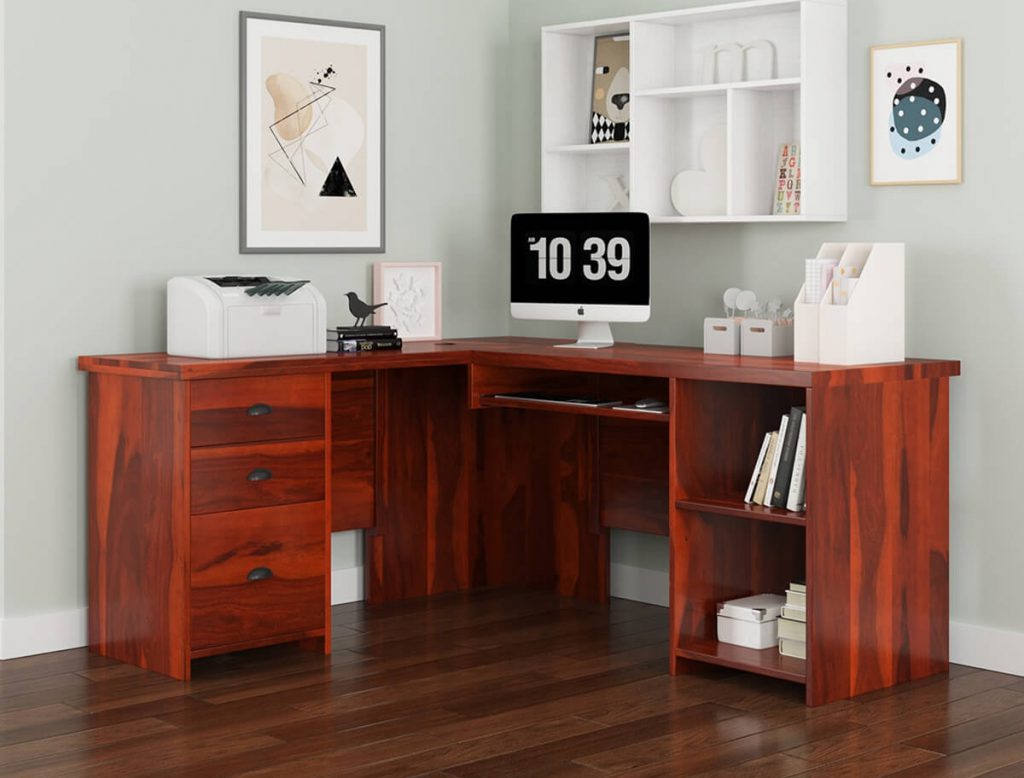5 Amazing Tips to Organize Your Home Office Space[From Experts]
Last Updated on July 31, 2024 by SierraLivingConcepts
Tips to Maximize Space in Your Home Office
Working in a well-organized and efficient space can double your productivity. A tidy home office provides mental ease and enables you to work more smoothly and quickly. Additionally, a clean and tidy office desk can improve your morale and provide you with a safe and happy work environment.
The basic tenets of organizing your office environment include efficient decluttering, a productive filing system, establishing an easy-to-follow organizing routine, and adhering to it! Organization of your home office and desk need not be a dreaded overwhelming task. instead, it can be easy and quick with these simple tips and ideas.
1. Get rid of unnecessary clutter!
According to Tami from Silver Lining Organizers, an uncluttered workspace has been directly correlated with increased productivity and improved focus and sleep. It is not an unknown fact that some things cost way more when we keep them.
The only items that maintain your workflow and are necessary to your work should be allowed or be seen on the desk as suggested by Keli Jakel from Organized by Keli. It will create a visually pleasing space that will motivate you to work. All other items must be kept tucked away in the drawers along with things you use most of the time and have easy access.
Additionally, the wall can be utilized for organizational purposes. Photo frames can be hung up instead of cluttering your desk with them, consider hanging them up to free up more space.
Lastly, throw out that equipment that does not work properly and will regularly assess your paperwork, and recycle the ones that are no longer required. Keep in mind that only 20% of the total paperwork that we have is actually useful to us.
2. Organize Your Paperwork!
Make a filing system that is sensible and practical. This goes a long way in keeping your home office organization intact whether you are using a digital organizer or a file cabinet.
2.1 Using a well-organized filing system goes a long way:
Certified professional organizer Amy Trager suggests that the key is to avoid being too specific or too general while creating categories and sub-categories. If your categories are too specific then you might not find what you are looking for and if they are too general then you will find yourself rummaging through too many documents.
2.2 Stick to a digitized filing system:
Nowadays digital filing is the norm due to its various functional and aesthetic benefits. Alexandra Kozak from Living Simply PGH emphasizes that digitally filed documents are more secure and will help you save on space and resources. They are also really easy to access.
Maximize digital filing for your documents, the rest can be filed away in neatly labeled binders. Scan as much paperwork as possible and save it to your cloud storage.
2.3 Stay up to date with organized paperwork:
Only 20% of the paper we keep is ever looked at again as stated by Audrey Tesora from Right Touch Organizing Services. So don’t be afraid to throw out paper even if you are hesitant about it. Set up a small file cabinet to house your paper documents. Files can be color-coded by topic or even labeled for clarity and arranged alphabetically for easy access.
According to Jamie Martin from Destination Organization, paperwork organizing can be broken into 4 categories:
- New – This is the type of paperwork that requires immediate decision-making and sorting on a daily basis.
- Active – These are paperwork that is continuously moving forward as part of the process. The best way to handle such type of paperwork is to digitize them (by scanning them) and keep track of them via an online task management system.
- Archive or Reference – This type of paperwork requires prompt and instant filing to prevent it from stacking up on your desk and taking up valuable space.
- Dead – These tend to be paperwork that is no longer useful due to the passing of a deadline or the conclusion of the required action or task.
2.4 Keep a file maintenance routine:
Elaine of Organized Transitions LLC urges to develop routine file maintenance. Depending on the volume, organization of your files, office supplies, and paperwork regularly prevents them from stacking up and creating too much clutter in your file organizers.
3. Establish a simple organizing regiment
Empty your desk and drawers of everything before you begin your office organization process. Julie Chaffee from Bruzzese Home Improvements suggests that this will help you assess what you should keep and what should be thrown away. After a thorough evaluation of everything, reorganize your items so that they are displayed on your desk or stored in your drawers.
3.1 Follow the functional-aesthetic rule:
You could use the ‘functional-aesthetic’ rule to segregate and organize your desk and home office. According to this rule, throw out anything that does not serve a functional or aesthetic purpose in your workspace.
Keep frequently used items like stationary and certain files and folders within your arm’s reach to increase productivity. This will also help you avoid wasting time searching for these items. Katherine Lawrence from My Space Matters says that ideally, you should have designated locations for office supplies, files and folders, tech gadgets, and other materials. This will ensure that they do not pile up on top of your desk and take up important space.
3.2 Limit your office supplies:
Aim to store and organize a limited number of office supplies in your home office. Avoid purchasing supplies like staples, tape, post-its, pens, etc. in bulk as they will take up space and make decluttering harder.
Alternatively, you could also place a small number of office supplies in a cup holder on your desk and house the rest in your office closet or wall shelves making your organizational job effortless.
3.3 Don’t over-organize:
Avoid over-organizing as it can weigh you down with too many details as suggested by Nikki Bell from Domestic Divas. Over-organization is a logistical nightmare for two reasons: Firstly, it takes up much-needed space that can be used for other purposes.
Secondly, you will have to dig through mountains of stuff to find something in your workspace. For example, keep one basket for all your writing utilities instead of a separate basket for pens, pencils, highlighters, etc.
3.4 A place for everything:
Wrangle all those pesky cords in a sleek bamboo cord container. For ones that you don’t use regularly, wrap them up with a cable tie and place them in a drawer.
Likewise, if you aren’t stapling papers together daily, then put the stapler in a drawer. Utilize boxes in the drawer to organize the contents, so that your paper clips aren’t mixing in with your thumbtacks, as suggested by Lauren from Next Highest Good.
4. Take advantage of mobility
If you don’t have a dedicated office space for your home, consider using a rolling cart as suggested by Alexandra Kozak in Simply Living PGH. It provides mobility or space to house all your work-related items.
5. Assess and evaluate regularly
It is essential that you stay on top of your organizing processes at all times. You can do this by setting a regular calendar date for reassessing your supplies and tidying up. Sierra Living Concepts emphasizes that maintaining your desk and office supplies and files at regular intervals will help save time and effort instead of keeping it all for one day.
5.1 Set a date for regular organizing and maintenance:
At the end of each day, tidying up a little works wonders to propel your productivity for the next day. There is something very motivating about a clean space when you arrive for work.
Regina says in A Clear Path that a few minutes of cleaning up each day really pays off in the long run. Twice a month, schedule an ‘admin day’ where you file all your paperwork and pay off all your expenses and bills to avoid a backlog.
Conclusion
A neat, clean, and efficient home office space will greatly improve your productivity and focus or leave you feeling much lighter. Decluttering your office shelves and supply closets need not be a dreary task if you start with these small and simple steps.
Related Post: Bedroom Organization Ideas [From Experts]


